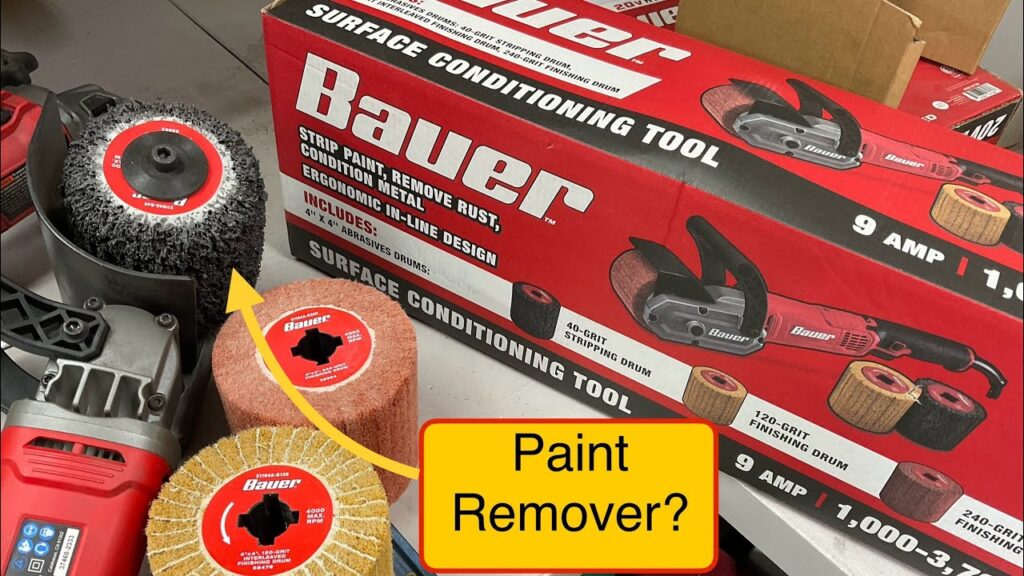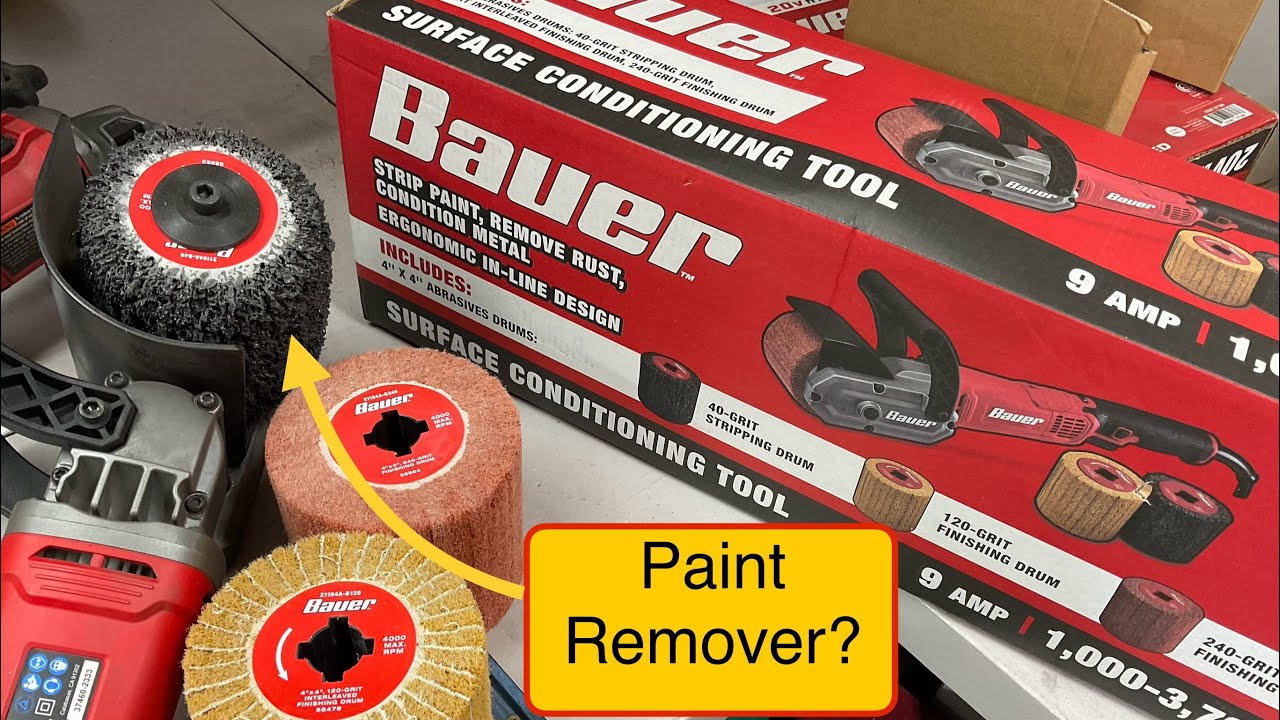
Is Harbor Freight Paint Thinner a Viable Option? A Comprehensive Review
When tackling painting projects, the choice of paint thinner can significantly impact the final result. Among the various options available, Harbor Freight paint thinner often emerges as a budget-friendly contender. But does its affordability compromise its effectiveness? This comprehensive review delves into the qualities, uses, and potential drawbacks of Harbor Freight paint thinner, providing you with the information needed to make an informed decision for your next project.
Understanding Paint Thinner and Its Uses
Before evaluating Harbor Freight paint thinner, it’s crucial to understand the fundamental role of paint thinner itself. Paint thinner is a solvent designed to reduce the viscosity of oil-based paints, varnishes, and epoxies. This reduction in viscosity makes the paint easier to apply, whether by brush, roller, or sprayer. Beyond thinning, paint thinner also serves as a cleaning agent for brushes, tools, and surfaces contaminated with wet paint. It can also be used to remove grease, wax, and other contaminants from surfaces prior to painting, ensuring proper adhesion.
Types of Paint Thinner
Paint thinners are primarily categorized into mineral spirits, lacquer thinner, and specialty thinners. Mineral spirits, also known as white spirits, are a petroleum-based solvent suitable for thinning oil-based paints and cleaning brushes. Lacquer thinner is a more aggressive solvent formulated to dissolve lacquers, shellacs, and epoxies. Specialty thinners are specifically designed for certain types of paints or coatings, such as urethanes or varnishes. Understanding the different types of paint thinner is crucial for selecting the appropriate product for your specific application. Using the wrong thinner can lead to compatibility issues, resulting in poor paint adhesion, wrinkling, or other undesirable effects.
Harbor Freight Paint Thinner: An Overview
Harbor Freight paint thinner is generally marketed as a multi-purpose solvent suitable for thinning oil-based paints and cleaning painting equipment. It is typically available in quart, gallon, and five-gallon containers, making it accessible for both small and large projects. The primary appeal of Harbor Freight paint thinner lies in its competitive price point, often significantly lower than comparable products from other brands. This affordability makes it an attractive option for budget-conscious consumers, DIY enthusiasts, and contractors seeking to minimize material costs.
Composition and Properties
Harbor Freight paint thinner is typically composed of mineral spirits or a similar petroleum-based solvent blend. The exact composition may vary, but it generally exhibits characteristics similar to standard mineral spirits, including a clear or slightly yellowish appearance, a distinct solvent odor, and a relatively low evaporation rate. The flash point, which indicates the temperature at which the vapors can ignite, is an important safety consideration. Users should always consult the product’s safety data sheet (SDS) for specific information on composition, properties, and safety precautions.
Performance Evaluation of Harbor Freight Paint Thinner
The effectiveness of Harbor Freight paint thinner hinges on its ability to adequately thin paint and clean painting equipment. To evaluate its performance, several factors should be considered, including its thinning power, cleaning efficacy, and compatibility with various types of paints and coatings.
Thinning Power
The thinning power of Harbor Freight paint thinner refers to its capacity to reduce the viscosity of paint to the desired consistency. User reviews and independent tests suggest that it generally performs adequately in thinning oil-based paints, allowing for smoother application and improved flow. However, some users have reported that it may require a slightly higher concentration of thinner compared to premium brands to achieve the same level of viscosity reduction. This can potentially impact the overall cost-effectiveness, as more product may be needed to achieve the desired results.
Cleaning Efficacy
In terms of cleaning, Harbor Freight paint thinner is generally effective at removing wet paint from brushes, rollers, and other painting tools. It can also be used to clean surfaces contaminated with paint spills or splatters. However, some users have noted that it may not be as effective at removing dried or heavily encrusted paint compared to more aggressive solvents like lacquer thinner. For optimal cleaning results, it is recommended to clean painting tools immediately after use, before the paint has a chance to dry.
Compatibility
The compatibility of Harbor Freight paint thinner with different types of paints and coatings is a crucial consideration. While it is generally suitable for thinning oil-based paints, it may not be compatible with all types of specialty coatings, such as lacquers, shellacs, or urethanes. Using an incompatible thinner can lead to a variety of problems, including poor adhesion, wrinkling, discoloration, and even complete coating failure. Always consult the paint manufacturer’s recommendations to ensure compatibility between the paint and the thinner. If in doubt, it is best to test the thinner on a small, inconspicuous area before applying it to the entire project.
Pros and Cons of Using Harbor Freight Paint Thinner
To provide a balanced perspective, it’s important to weigh the advantages and disadvantages of using Harbor Freight paint thinner. By considering these factors, you can determine whether it is the right choice for your specific needs and priorities.
Pros
- Affordability: The primary advantage of Harbor Freight paint thinner is its low price point, making it an attractive option for budget-conscious consumers.
- Availability: It is readily available at Harbor Freight stores and online, making it easily accessible to a wide range of customers.
- Multi-purpose: It can be used for thinning oil-based paints and cleaning painting equipment, offering versatility for various applications.
- Adequate Performance: It generally performs adequately in thinning paint and cleaning tools, although it may require a slightly higher concentration compared to premium brands.
Cons
- Potentially Lower Quality: Some users have questioned the overall quality and purity of Harbor Freight paint thinner compared to more expensive brands.
- May Require More Product: It may require a higher concentration to achieve the same level of viscosity reduction, potentially impacting cost-effectiveness.
- Limited Compatibility: It may not be compatible with all types of specialty coatings, requiring careful consideration of the paint manufacturer’s recommendations.
- Strong Odor: Like most paint thinners, it has a strong solvent odor, requiring adequate ventilation during use.
Safety Precautions When Using Paint Thinner
Paint thinner, regardless of the brand, is a potentially hazardous substance that requires careful handling and storage. It is essential to follow all safety precautions to minimize the risk of accidents, injuries, and health problems.
Ventilation
Always use paint thinner in a well-ventilated area to prevent the build-up of harmful vapors. Open windows and doors, or use a fan to circulate fresh air. If adequate ventilation is not possible, wear a respirator approved for organic vapors.
Personal Protective Equipment (PPE)
Wear appropriate PPE, including gloves, safety glasses, and protective clothing, to prevent skin and eye contact. Avoid breathing the vapors, and wash your hands thoroughly after handling paint thinner.
Flammability
Paint thinner is flammable and should be kept away from heat, sparks, and open flames. Store it in a tightly closed container in a cool, dry place, away from combustible materials. Never smoke or use open flames near paint thinner.
Disposal
Dispose of used paint thinner and contaminated materials properly, in accordance with local regulations. Do not pour paint thinner down the drain or into the environment. Contact your local waste management agency for information on proper disposal methods.
Alternatives to Harbor Freight Paint Thinner
If you are not completely satisfied with Harbor Freight paint thinner or are looking for alternative options, several other brands and types of paint thinner are available. These alternatives may offer improved performance, compatibility, or safety characteristics.
Premium Brands
Premium brands of paint thinner, such as Klean-Strip, Crown, and Sunnyside, often offer higher purity, consistent quality, and superior performance compared to budget-friendly options. These brands may be more expensive, but they can provide better results and greater peace of mind.
Low-Odor Mineral Spirits
Low-odor mineral spirits are a type of paint thinner that has been processed to remove or reduce the strong solvent odor. These products are a good option for individuals who are sensitive to odors or who are working in poorly ventilated areas.
Biodegradable Paint Thinners
Biodegradable paint thinners are made from renewable resources and are designed to break down more easily in the environment. These products are a more environmentally friendly alternative to traditional petroleum-based thinners.
Conclusion: Is Harbor Freight Paint Thinner the Right Choice for You?
Harbor Freight paint thinner offers an affordable solution for thinning oil-based paints and cleaning painting equipment. Its primary advantage lies in its low price point and wide availability. However, it is important to consider its potential drawbacks, including potentially lower quality, the need for a higher concentration, and limited compatibility with certain coatings. By weighing the pros and cons, considering your specific needs and priorities, and following all safety precautions, you can make an informed decision about whether Harbor Freight paint thinner is the right choice for your next painting project. Always remember to consult the paint manufacturer’s recommendations and test the thinner on a small, inconspicuous area before applying it to the entire project. [See also: Best Paint Thinners for Oil-Based Paints] [See also: How to Clean Paint Brushes Properly] [See also: Safety Tips for Using Paint Thinners]

